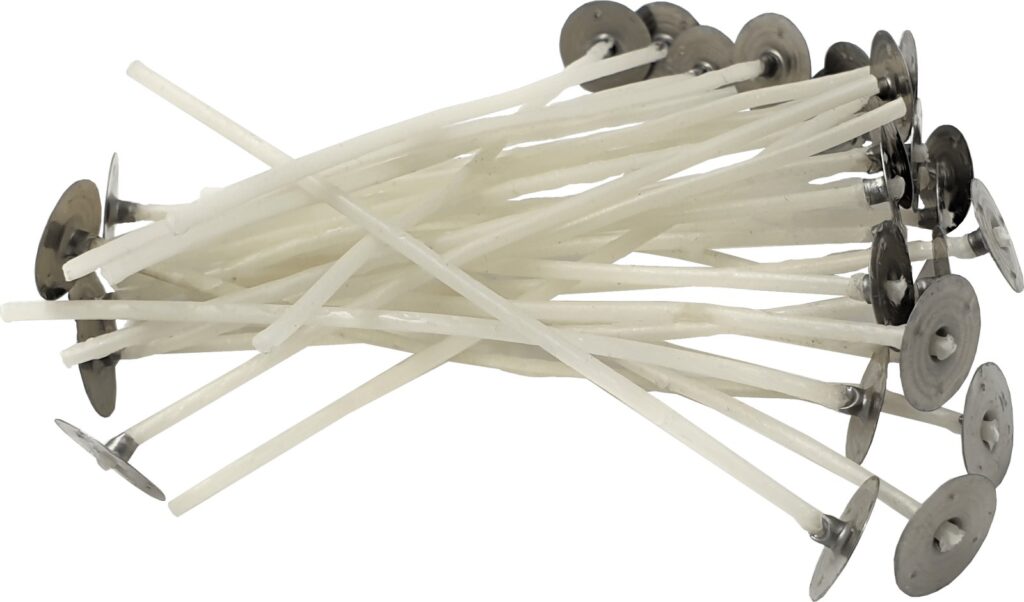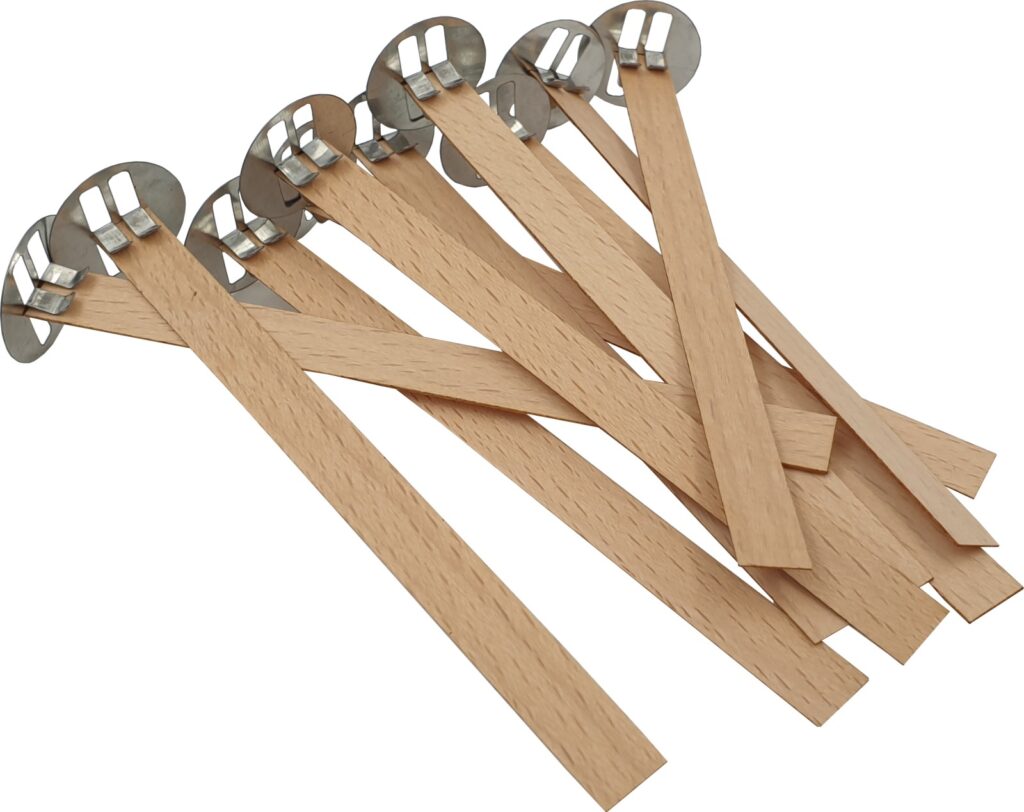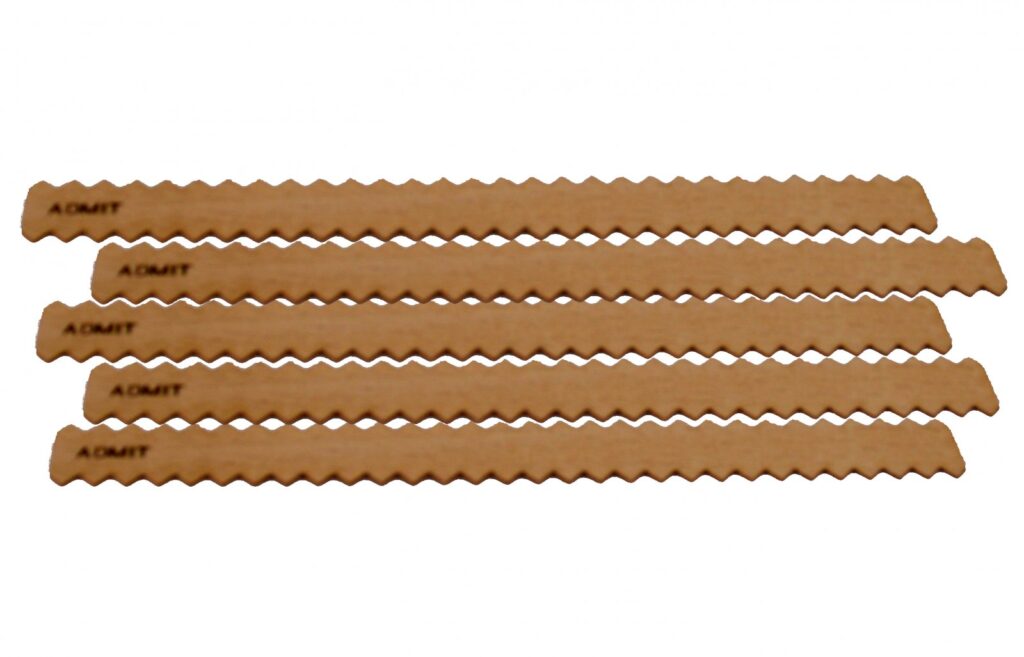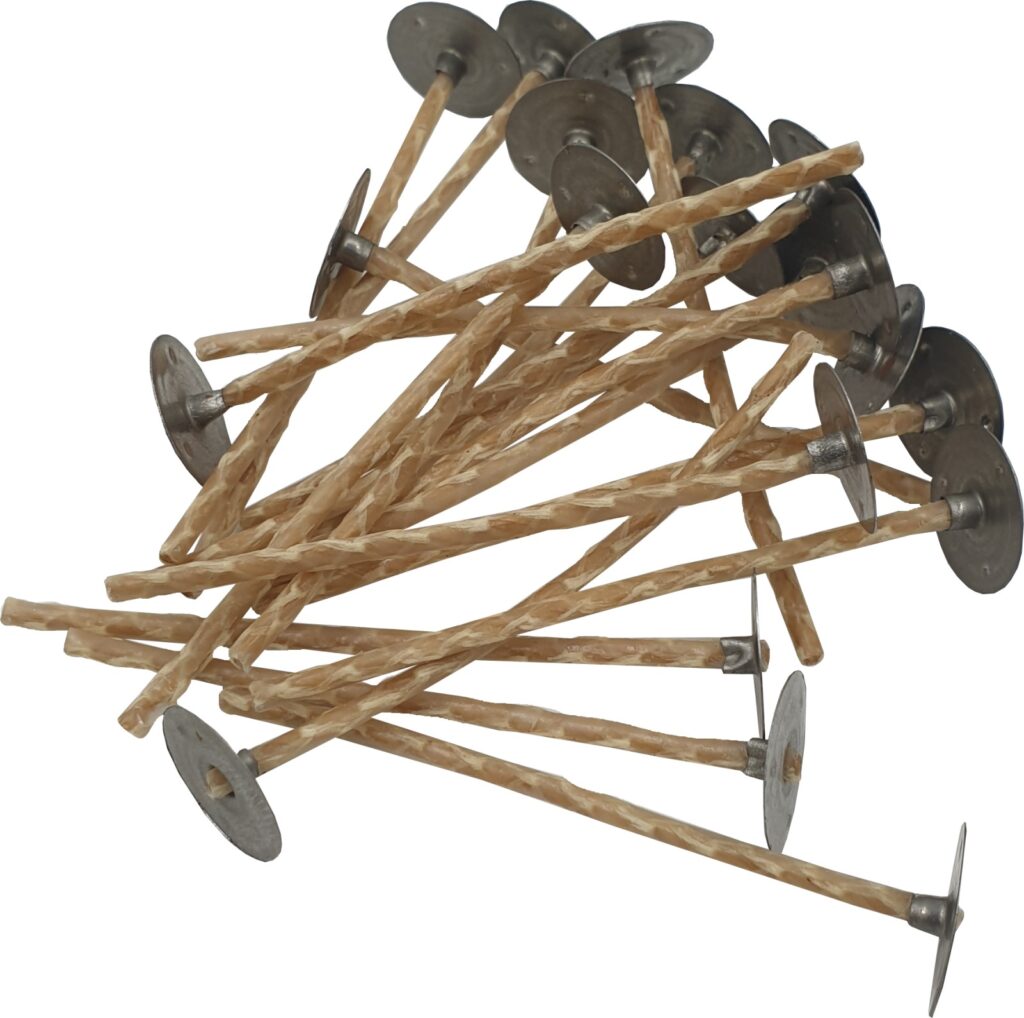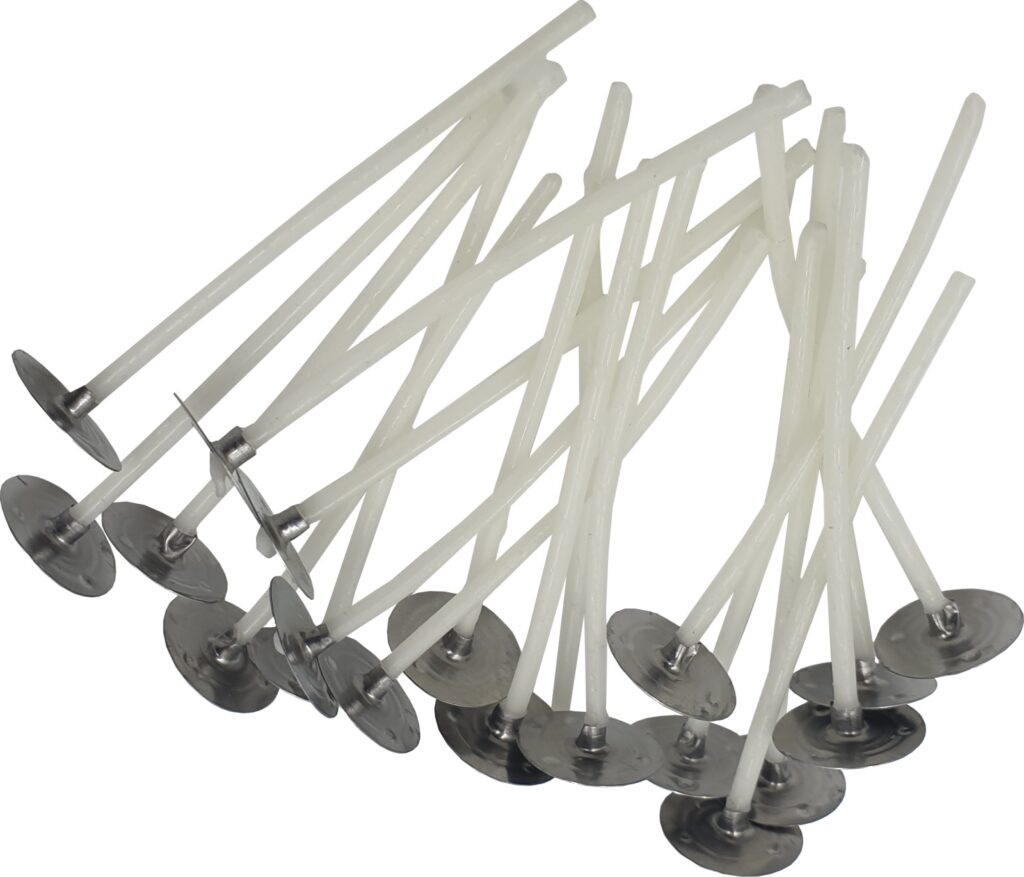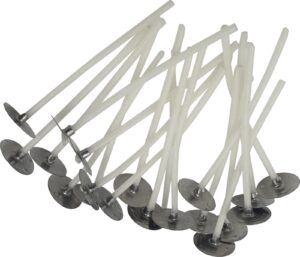The wick is one of the most underrated elements of a candle. After all, it is the candle that burns and its quality and parameters have a huge impact on the use of the candle. For the uninitiated - the wick is the string or board in the middle of the candle that ignites.
If it is a "board", it is usually a simple, untreated veneer, an ordinary, flat element, sometimes there may be two pieces of veneer folded crosswise. Most often they are used to give a more rustic and "eco" style to the candle. It is important that it is of high quality and untreated, possibly soaked with appropriate substances that cause even burning or self-extinguishing. Wooden wicks have become popular also because recently our market has been flooded with a large number of candles from Asia, in which material wicks are often produced for quantity and not quality, which is why many customers after bad experiences with them decide to buy wooden wicks.
Material wicks are usually a cord with a cotton core. The raw material is 100% cotton. The string undergoes the finishing process, i.e. soaking with preparations ensuring self-extinguishing, improving the capillary phenomenon, minimizing soot or its complete elimination, and self-burning by achieving the appropriate angle of the wick in relation to the flame
The more threads the wick has, the bigger the flame. At the stage of candle production, tests are carried out to match the appropriate wick to a given candle. The type of wick in the candle is influenced by the shape and size of the candle, raw material composition (type of paraffin or wax), aromas, dyes, and other additives. Often candles from the same series have different wicks, e.g. due to different fragrance additives. The type and size of the wick also depends on the burning rate of the candle, the stability of the flame (e.g. in the wind) and the size of the flame. A badly selected wick may not burn, go out or the other way around - pose a threat and cause a fire.
It is also important to install the wick in the candle. It must be attached to the bottom of the candle so that it does not slip out of the candle during burning and melting of the wax. Ideally, it should also be protected from the bottom against complete burning to the very bottom, especially in free-standing candles or cylinders placed directly on the ground that can be damaged or catch fire.
Before lighting the candle, you should also properly trim the wick to a height of 0.5 - 1 cm, and if you burn more candles, place them at the right distance from each other. Often the manufacturer provides such information on the candle label in the form of small pictures/pictograms. You should also remember about the access of oxygen to the fire. A candle placed in a lantern with little access to fresh air will burn worse than expected by the manufacturer, it may go out or burn out unevenly, burn the walls badly, have a small flame that does not give light.
Below are some examples of wicks.
